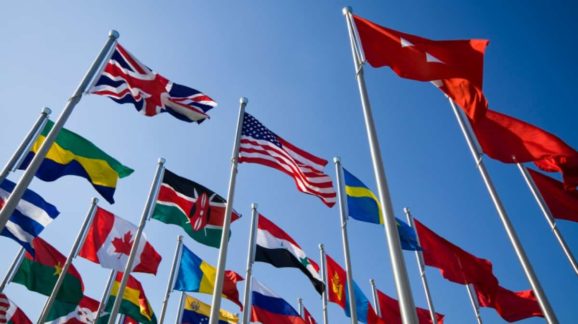A New Front in the Trade War: Overseas Private Investment

 Tariffs get most of the press in today’s trade debate, and for good reason. Tariff rates under Trump have roughly doubled in less than two years, and more might be on the way. But tariffs are not the only way government tries to manage trade. Another is in finance. In particular, an agency called the Overseas Private Investment Corporation, or OPIC, might be doubling in size shortly, to a total portfolio size of $60 billion.
Tariffs get most of the press in today’s trade debate, and for good reason. Tariff rates under Trump have roughly doubled in less than two years, and more might be on the way. But tariffs are not the only way government tries to manage trade. Another is in finance. In particular, an agency called the Overseas Private Investment Corporation, or OPIC, might be doubling in size shortly, to a total portfolio size of $60 billion.
Unfortunately, on September 26 the House passed legislation to increase and rename OPIC. The BUILD Act, a bill that would do just that, was folded into must-pass 1,205-page legislation to reauthorize the Federal Aviation Administration. The House passed it on September 26, with the Senate to follow suit, likely before the end of the month, calendar permitting. Absent an effort to remove the BUILD Act provisions from the Senate version or during reconciliation, President Trump’s trade war will open a new front, hurting both the economy and America’s foreign policy interests to the tune of about $480 per U.S. household.
OPIC is basically an economic development agency. This sounds benign; it is not. In a 2015 paper, I pointed out that OPIC costs roughly $719,000 per job it supports. By my calculations from OPIC’s 2017 data, it has become more efficient, with 2017’s new projects costing $523,076 per job supported. Even with this improvement, OPIC-supported (they refuse to use the term “created”) jobs still cost nearly ten times per capita U.S. GDP. OPIC’s total portfolio size is currently a little more than $23 billion, with $3.8 billion of that coming in 2017.
OPIC operates by providing loan guarantees and other financial products for business projects in other countries, often to the benefit of U.S. businesses with the right political connections. As part of its reorganization plan, the Trump administration is proposing to fold a few similar agencies into OPIC, double its size, and change its name. A July 17 press release about the BUILD Act states:
The Administration supports H.R. 5105/S. 2463, the “Better Utilization of Investments Leading to Development (BUILD) Act of 2018,” which would consolidate the Overseas Private Investment Corporation (OPIC) and other development-finance programs into a reformed United States International Development Finance Corporation (USDFC). This action will catalyze market-based, private-sector development and economic growth in less-developed countries and advance the foreign policy interests of the United States.
There are a lot of reasons the Trump administration views OPIC and the proposed USDFC as useful to its trade and foreign policy agendas. One of them is China. As OPIC states in a September 25 press release, after the BUILD Act was folded into the FAA reauthorization bill:
At a time when China is investing heavily in emerging markets under a state-directed model, the U.S. model offers an alternative for advancing development in a manner that is financially sound, adheres to high standards and avoids debt traps.
There is a lot to unpack from these statements. First, government-directed investment is not market-based development, as the administration alleges. OPIC is a government agency that transfers money from taxpayers to private businesses. OPIC makes the same mistake in its statement. As an alternative to one state-directed model, they offer another state-directed model.
Nor is this financially sound, as OPIC alleges. OPIC claims a profit on its investments, covering its own costs and reducing the federal deficit by $262 million last year. This is based on unusual accounting practices that are rarely used in the private sector, as my paper points out. OPIC may very well show a loss under the same accounting standards the private sector uses. But let’s be charitable and grant OPIC the $262 million in 2017 deficit reduction for the sake of argument. Its financial soundness claims are still weak, even with this artificial strengthening.
The reason is the old economist’s question, “as compared to what?” In other words, what are the other possible uses for the resources OPIC uses? What if OPIC’s portfolio had instead been invested by private investors? They have their own money at stake; OPIC does not. Private investment is meritocratic; OPIC admits its investments are politically driven. In many years, as much as 40 percent of its investments are earmarked for green investments, for example. With OPIC’s politicized incentive structure, its investment decisions are likely far less profitable than likely alternative options. OPIC does less with more, on purpose. Private investors take the opposite approach, also on purpose. The solution to this problem is not to double OPIC’s size.
The other big issue here is China. China has its own versions of OPIC and similar investment agencies, which also make politically-directed investments in strategic countries. It is in America’s interest to make similar investments to build alliances and relationships in the region, the thinking goes. Foreign policy concerns outweigh the financial cost.
That’s a subjective value judgment, but let’s grant it here for the sake of argument. The trouble is that the administration’s foreign policy goals are unclear. President Trump is ever-concerned about trade deficits, despite endless “Groundhog Day” meetings where his aides explain again and again that trade deficits don’t hurt the economy because people get something in return.
If successful—and remember, that’s a bigger “if” than in non-state-run investment models—OPIC’s foreign investments would likely increase net U.S. imports. This would add to America’s trade deficit. While this is neither good nor bad for America’s economic health, it contradicts President Trump’s long-held stance on trade deficits. It is unclear if he understands this, or if other concerns for him outweigh a likely increase in the trade deficit.
President Trump is also concerned about the Chinese government’s unfair trade practices, and rightly so. I explained in an earlier post why tariffs will not encourage China to liberalize its trade policies. The same argument applies here to government-directed foreign investments. Basically, we’re making strategically located foreign investments because China is, too.
The trouble is that China is unlikely to respond to increased U.S. foreign investment in its neighborhood by making completely unrelated reforms to its IP abuses, technology transfer, and government ownership policies. If it responds at all, it will likely be the same way it responds to higher tariffs—retaliation with more of the same. This will almost certainly not increase economic or political freedom in China, or improve its bad-faith trading behavior.
Given the corruption opportunities state-directed investments create, ramping up such activity by both the U.S. and China could actually make East Asia less stable, not more U.S.-friendly. Of all the ways to advance America’s foreign policy interests, doubling OPIC’s size and renaming it the USDFC is surely not on the list. This would likely be the case even if the administration had clear policy objectives.
OPIC is bad enough as it is. Doubling its size and rebranding it with a different name will not improve its policy outcomes, it will make them worse. Some of the investments will turn out to be boondoggles, wasting perfectly good capital that could have created more value in less politicized hands. This will dampen future economic growth. A bigger OPIC could well increase the trade deficit. And it almost certainly will not induce China to make needed trade reforms. It could also increase corruption in China’s surrounding countries, weakening potential U.S. allies. In short: bad idea. The BUILD Act provisions should be removed from the FAA reauthorization bill. OPIC should be closed, not doubled.